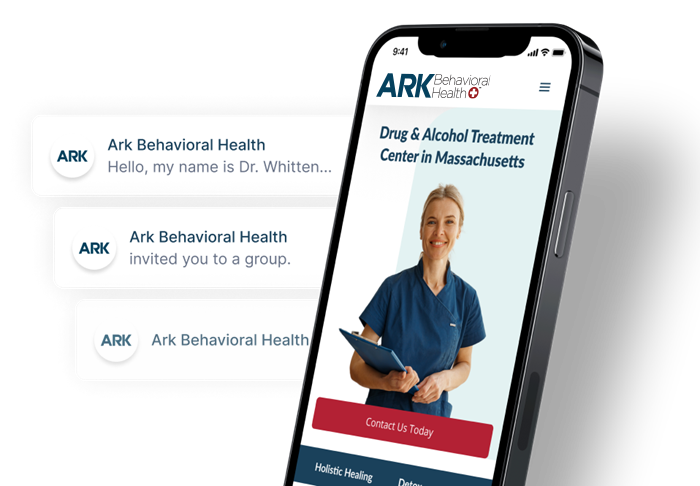Alcohol: Abuse, Addiction, & Treatment Options

Since alcohol is legal and socially accepted, it’s not always considered a dangerous drug. But alcohol abuse destroys thousands of lives each year through overdose, dependence, and addiction.
If you drink a lot on a regular basis, you increase your risk of physical and mental health problems related to alcohol as well.
Alcohol Abuse
People who abuse alcohol drink too much, too often, or both. They may be drinking alcohol at dangerous times, such as before driving or when they’re supposed to be caring for a child.
While research continues on whether alcohol consumption is beneficial to health in any way, moderate drinking is generally accepted as low-risk. When someone engages in binge drinking or heavy drinking, they may develop an alcohol use disorder.
The Substance Abuse and Mental Health Services Administration (SAMHSA) defines drinking levels as:
- Moderate drinking: one drink for a woman or two drinks for a man on a single day
- Binge drinking: four drinks for a woman and five drinks for a man within two hours
- Heavy drinking: eight drinks for a woman or 15 drinks for a man within one week
According to the Centers for Disease Control and Prevention (CDC), a “drink” is measured differently depending on the alcohol content:
- 5 ounces of wine (12 percent alcohol)
- 12 ounces of beer (5 percent alcohol)
- 8-9 ounces of malt liquor (7 percent alcohol)
- 1.5 ounces of liquor (40 percent alcohol)
Learn more about Methods Of Alcohol Abuse
An alcohol use disorder can range from occasional binge drinking to alcohol addiction. Over six percent of people age 21 and older binge drink or drink heavily. While fewer people under 21 drink heavily, a staggering 12 percent of them engage in binge drinking.
Alcohol problems contribute to 88,000 deaths per year in the United States. That includes people who are killed by drunk drivers—not just the people who are drinking. Abusing alcohol can cause blackouts and increases the risk of unsafe behavior that affects you and those around you, like unprotected sex or driving under the influence.
How Does Alcohol Affect The Brain And Body?
Alcohol makes you feel good by relaxing your mind and body. It enhances the function of GABA, an amino acid that regulates brain activity and keeps you calm.
This slows down the central nervous system, which is responsible for vital functions like controlling the senses and muscles. Alcohol also affects the cerebellum, the part of the brain associated with balance.
In the short-term, alcohol can make you more talkative and lower your inhibitions. It impairs your judgment both physically and mentally, so you’re more likely to do things you wouldn’t normally do.
Binge drinking can slow your reaction time, throw off your balance, and even make it hard to see straight.
Alcohol misuse has been linked to long-term health effects in most of the vital organs, potentially causing liver disease and heart issues. It can also worsen mental health issues like anxiety and depression.
The longer someone abuses alcohol, the higher their risk of health issues later in life, even years after they stop drinking.
Learn more about the Physical And Mental Side Effects Of Alcohol Abuse
Alcohol Tolerance
If you drink often, your brain adjusts its natural function to make up for the effects of alcohol so you don’t get too sedated. The same amount of alcohol won’t have as strong of an effect over time.
As alcohol tolerance develops, many people drink more to make up for it. Increased alcohol consumption raises the risk of physical dependence, alcohol use disorders, and addiction.
Alcohol Dependence And Withdrawal Symptoms
When someone consumes alcohol regularly, their body gets used to it and may react adversely if they skip their usual drink. Physical alcohol dependence can occur whether someone has one drink per night or five—as long as they’ve been drinking regularly for a while.
If you’re physically dependent on alcohol, you’ll likely experience withdrawal symptoms if you suddenly stop drinking. The more you drink, the more intense these symptoms will be.
Alcohol withdrawal symptoms include anxiety, depression, vomiting, and increased heart rate. In severe cases, you may experience delirium tremens, a dangerous condition that comes with hallucinations, fever, and seizures.
Learn more about Alcohol Withdrawal
Can You Overdose On Alcohol?
Drinking too much in a short period can cause alcohol poisoning, a dangerous and potentially deadly condition.
If your central nervous system slows down too much, you could pass out and stop breathing. Not breathing for a prolonged period means no oxygen gets to your brain, which could create a higher risk for permanent brain damage.
Other alcohol overdose symptoms include:
- vomiting
- severe dehydration
- irregular heartbeat
- drop in body temperature (hypothermia)
- seizures
Mixing alcohol with other drugs—especially depressants—increases the risk of overdose.
Alcohol Addiction
Alcohol dependence isn’t the same as addiction, though most people who are addicted are also physically dependent.
Addiction is a disease that occurs when alcohol alters the brain. An addicted person needs alcohol to function and they crave it. Even if they recognize their drinking is ruining their life and health, or causing legal problems, they’re unable to stop or cut back.
Other signs of a drinking problem include:
- drinking more than intended
- needing alcohol to get through the day
- drinking at inappropriate times, such as at work
- job loss and/or financial issues related to alcohol
- drinking even if it worsens a mental or physical health problem
- strained relationships with family and friends or loved ones
- loss of interest in hobbies and socializing
- high tolerance for alcohol
- alcohol withdrawal symptoms
Some people can hide alcohol addiction for a long time and remain functional in daily life. But drinking heavily still affects their mental and physical health. Eventually, they’ll have to face the consequences of alcohol abuse.
Risk Factors For Alcohol Addiction
Many people drink alcohol—and even drink regularly— without becoming addicted to it. Research is ongoing as to why some people become addicted to drinking alcohol and others don’t. But several risk factors can increase your chance of developing an addiction.
Family History
Heavy alcohol use over time increases the risk of an alcohol use disorder, as does starting at a young age. A family history of alcohol abuse can raise the chance someone will become addicted, due to genetic and environmental factors.
Mental Health
Mental health issues like anxiety and depression often lead people to abuse alcohol. Poor mental health can stem from trauma, which is another risk factor.
Some people find that alcohol reduces feelings of stress and helps them cope, but drinking is a way of avoiding issues rather than working through them.
Social Environment
Society and culture can play a role in problem drinking as well. If your friends, family, and role models engage in heavy drinking, you may be more likely to do the same.
Alcohol Treatment
Addiction makes it hard to stop drinking, even if you want to. If you’re ready to break free from alcohol addiction, a comprehensive treatment program can help.
Alcohol addiction treatment often begins with medically assisted detox, which rids the body of alcohol. You’ll be monitored closely to ensure you go through the withdrawal process safely.
Since everyone’s experience with addiction is unique, the most effective treatment plans are tailored to individual needs. Treatment usually includes behavioral therapy, counseling, and support groups, as well as a blend of stress management techniques, like art therapy and yoga.
Learn more about Alcohol Treatment Programs
Medication-assisted treatment (MAT) may also be an option. There are three FDA- approved medications to treat alcohol addiction:
- Acamprosate (Campral) targets chemical messengers in the brain to reduce withdrawal symptoms.
- Disulfiram (Antabuse) produces uncomfortable effects, such as nausea, when you drink alcohol.
- Naltrexone (Vivitrol) reduces cravings and blocks receptors in the brain that “reward” you for drinking.
Many people have trouble overcoming alcohol addiction because of cravings and withdrawal symptoms. MAT combines medication and therapy to make it easier to stop drinking, avoid relapse, and focus on recovery.
To learn about our personalized rehab programs for alcohol and substance use disorders at Ark Behavioral Health, contact a treatment specialist today.
FAQ
How Do I Know If I’m Drinking Too Much?
The National Institute on Alcohol Abuse and Alcoholism (NIAAA) defines drinking levels as moderate and heavy.
Moderate drinking is one drink per day for women and two drinks per day for men. Heavy drinking is more than four drinks per day for men and three drinks per day for women. One “standard” drink is any beverage that contains about 14 grams of pure alcohol.
Learn more about Drinking Too Much
How Is Binge Drinking Defined?
Binge drinking is defined by how much alcohol you drink in about two hours. For men, it’s five drinks in two hours, and for women, it’s four drinks in two hours.
Learn more about Binge Drinking
What’s The Latest Data On Alcohol Abuse?
Recent facts and statistics on alcohol abuse in the United States include:
- 2.3 percent of Americans (861,000) engaged in heavy alcohol use in the past month
- over 85 percent of people have drank alcohol at some point in time
- over 14 million adults were diagnosed with alcohol use disorder in 2018
- approximately 88,000 people die from alcohol-related causes each year
Learn more about Alcohol Facts & Statistics
What Is The Definition Of “Alcoholic?”
An alcoholic is a person who struggles with any combination of alcohol abuse, alcohol addiction, or alcohol dependence. In recent years, the term “alcoholic” is slowly being phased out, as it may be seen as stigmatizing language. However, it may still be heard in casual, non-medical settings.
How Do Alcohol Addiction Hotlines Work?
Hotlines/helplines are toll-free phone numbers that connect you with substance abuse or mental health services. Treatment specialists are staffed 24/7 to answer your call whenever you or a loved one needs help. All phone calls are confidential and don’t require any commitments.
Is There A Connection Between Alcohol Abuse & Depression?
Yes. Sometimes alcohol abuse causes depression in overall healthy people, and other times depression leads to alcohol abuse by self-medicating distressing symptoms. Over time, alcohol use is likely to make depression worse.
Additionally, people with depression face twice the risk of developing alcohol use disorder (AUD) than the general population.
Is There A Link Between Alcohol & Suicide?
There is a link between alcohol and suicide. Abusing alcohol can lead to suicidal thoughts and actions and suicidal and depressive thoughts can lead to alcohol abuse.
How Long Does Detoxing From Alcohol Take?
Detoxing from alcohol can take about one week on average. The severity and timeline of alcohol detox can vary depending on the patient’s drinking habits.
Didn’t find the answer you were looking for? Find more here – More Alcohol FAQs
Written by Ark Behavioral Health Editorial Team
©2024 Ark National Holdings, LLC. | All Rights Reserved.
This page does not provide medical advice.
Mayo Clinic - Alcohol Poisoning
National Institute on Alcohol Abuse And Alcoholism - Alcohol Use Disorder
National Institute on Drug Abuse - Principles of Drug Addiction Treatment: A Research-Based Guide (Third Edition)
Substance Abuse and Mental Health Services Administration - Alcohol Use Facts and Resources


Questions About Treatment?
Ark Behavioral Health offers 100% confidential substance abuse assessment and treatment placement tailored to your individual needs. Achieve long-term recovery.
100% confidential. We respect your privacy.
Prefer Texting?
Our friendly support team is here to chat 24/7. Opt out any time.

People Also Read
- Alcohol Related-Topics
- What Is Alcoholic Nose?
- Types Of Alcohol
- How To Taper Off Alcohol Safely
- Mixing Alcohol With Opioids
- Mixing Alcohol With Stimulants
- Mixing Alcohol With Sleeping Pills
- Drinking Alcohol On Accutane
- Mixing Ketamine With Alcohol
- Mixing Alcohol And Prednisone
- Mixing Alcohol With Lithium
- 5 Reasons Alcohol Should Be Illegal
- Do Alcoholics Have Hangovers?
- Episodic Alcoholism
- Why People Refuse To Go To Rehab






 Learn More
Learn More








